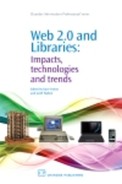0%
20Chapters
0-1Hours read
0kTotal Words
Book Description
In a world where computing power, ubiquity and connectivity create powerful new ways to facilitate learning, this book examines how librarians and information professionals can utilize emerging technologies to expand service and resource delivery. With contributions from leading professionals, including lecturers, librarians and e-learning technologists, this bookl explores strategic approaches for effectively implementing, living with, and managing revolutionary technological change in libraries.- Explores the impact of the social and technological aspects of Web 2.0 on libraries and library services
- Draws on empirical research
- Experienced practitioners
Table of Contents
- Cover image
- Title page
- Table of Contents
- Copyright
- List of figures
- Preface
- Acknowledgements
- Contributors’ biographies
- Part 1: Place
- Chapter 1: The changing teaching and learning environment
- Chapter 2: Transforming the library – e-books and e-buildings
- Introduction
- The book will eat itself – e-books 2.0
- What e-books could be – the online or networked book
- The e-book library – not reading but searching
- Every searcher a book, every book its e-book reader platform
- Devices and gadgetry
- E-publish or perish
- Google Books – the infinite library
- The future observed
- If there were no such thing as libraries would we build them today?
- The connected building
- Part 2: People
- Part 3: Technology
- Part 4: Conclusion
- Index
